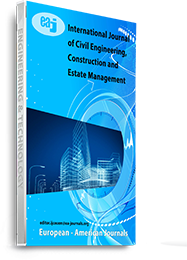Normal
0
false
false
false
EN-US
ZH-CN
AR-SA
/* Style Definitions */
table.MsoNormalTable
{mso-style-name:”Table Normal”;
mso-tstyle-rowband-size:0;
mso-tstyle-colband-size:0;
mso-style-noshow:yes;
mso-style-priority:99;
mso-style-parent:””;
mso-padding-alt:0cm 5.4pt 0cm 5.4pt;
mso-para-margin-top:0cm;
mso-para-margin-right:0cm;
mso-para-margin-bottom:10.0pt;
mso-para-margin-left:0cm;
line-height:115%;
mso-pagination:widow-orphan;
font-size:11.0pt;
font-family:”Calibri”,”sans-serif”;
mso-ascii-font-family:Calibri;
mso-ascii-theme-font:minor-latin;
mso-hansi-font-family:Calibri;
mso-hansi-theme-font:minor-latin;
mso-bidi-font-family:Arial;
mso-bidi-theme-font:minor-bidi;
mso-ansi-language:EN-US;
mso-fareast-language:ZH-CN;}
As a major component of the joint zone steel-concrete composite bridge, the perfobond rib shear connectors (in German, or perfobond leiste, or in short, PBL) are widely used in recent years. Studies on PBL are relatively complete, while some results show a difference in significant between composite PBL and embedded PBL. Therefore, the limiting state and ultimate bearing capacity of the embedded PBL are examined in the current work based on some experimental studies and analysis of finite elements, on the following aspects: (1) FEA (finite element analysis) may suffer from poor convergence and low computational efficiency, while the simplified model cannot reflect local stress. Based on the test system of anchorage of Yangtze River Bridge 4 in Nanjing, the design parameters and embedded PBL dimensions were described; the relevant test results were summarized and analyzed. (2) Some detailed FEA models have been built according to the experience of the Yangtze 4 Yangtze River Bridge Anchorage System in Nanjing. Standard static analysis, extend the finite element method (XFEM), virtual crack closure technique (VCCT) are applied, is most suitable for this situation. (3) Six models of FEA models are constructed through one variable method to investigate the influencing factors on the ultimate bearing status of the embedded PBL. The results of these models are shown: the reinforcement ratio cannot affect the mechanical properties of the embedded when the ratio is 4 times lower than the diameter of the hole in concrete in a steel slab area. Through dimensional analysis, parameters that affect the mechanical properties of the embedded PBL can be rearranged in two dimensionless fitting a power function of the ability to represent the load-slip relationship of the embedded PBL shear connectors.
Keywords: ABAQUS, Composite PBL, Embedded PBL, FEM, Load Slip, Perfobond Rib Shear, Structure Bridge

